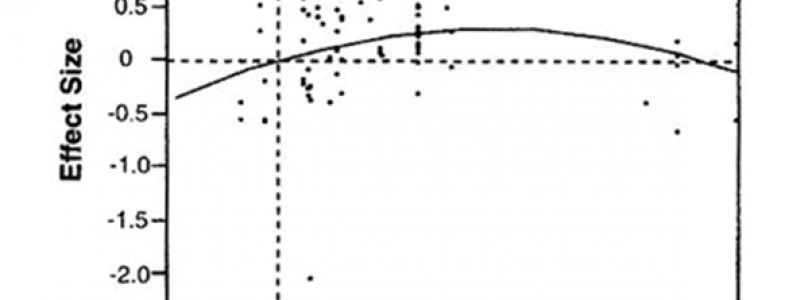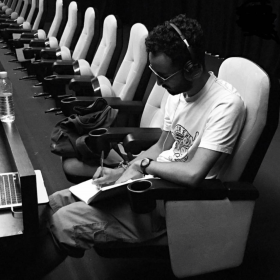I have chosen this question as it is one that I am very passionate about, and feel I can really delve deeper in to. Censorship has always been a topic of controversy, as although it is put in place to protect an audience, many deems that it ruins the artists' intention and can harm the educational aspects of the arts. The age rating system is the most widely accepted form of rating content. It effects film, television, theatre, and even galleries. The age rating system is heavily enforced but constantly under fire for its, what some deem, flawed execution and some even hope for the system to be dismissed entirely.
Upon inspecting The British Board of Film Classification website, I looked into its classification system. The BBFC has eight distinct certificates that it can apply to media in order to determine who can view it.
The first of these ratings is the 'U' rating. The 'U' stands for universal audience and is considered a piece of media that is fit to be shown to anyone, ranging from young children to the elderly. An example of this rating would be Disney Pixar's mesmerising 'Finding Nemo'. The BBFC website claims that to receive the rating the piece of entertainment must not allow anything such as anti-social behaviour, drugs, and discrimination to a predominant feature in the film, and anytime any of these are mentioned they must be clearly disproved of. Slight sexual references are allowed but must not be dwelled on, and things such as kissing are tolerated. Mild violence can also be featured in the production as long as it is given just enough cause in context to the piece, such as comedic element, or the violence is unrealistic.
The 'PG' certificate stands for Parental Guidance. The rules to attain the 'PG' certificate are very similar to the ones in place for receiving a 'U'. The 'PG' rating, in its most basic sense, allows for slightly more mature moments that may be appropriate for slightly older children, under the age of 12. Many successful movies have received this rating, like the 'Harry Potter' franchise.
The '12' and '12A' certificates are very similar. The '12A' means that those under 12 may still attend the movie when accompanied; however the '12' rating stops those under the age of 12 from being able to view the work. Again everything, which was only accepted in small amounts in previous ratings, is now slightly more acceptable, as long as in a small dosage, but anything like drug use or discrimination must clearly be disapproved of. This is the same for a 15 rated piece of media, but again the themes are allowed to be explored in greater depths. Movies such as 'Scott Pilgrim Vs. The World', 'Mad Max: Fury Road', and "Logan" are known for achieving these two ratings.
The '18' rating almost allows any content to be shown, be it sexual or violent. Unlike other ratings drug use does not have to directly be disapproved of. There are, however, a few exceptions, examples include the law being broken to create the media, or if the work seems pornographic for example. The 'R18' rating is the highest that can be given by the BBFC and encompasses primarily explicit material featuring consenting sex or strong fetish material with adults only. Films with this rating may only be shown to adults in specially licensed cinemas, and video works may be supplied to adults only in licensed sex shops.
I feel that this way of rating isn't as effective as we believe it is. I feel that there is little to no variation between some of these ratings, and the differences are too vague and confusing to be utilised. I feel that a different way of rating content should be introduced, one that allows for a more exact representation of what shall be expected from the moving picture. Perhaps the problem lies with choosing a particular age group to be suited for a movie, however it is too soon for any real judgements to be made wholly.
Art, be it a film or painting, contains so many variables that surely it seems unrealistic and almost foolish to believe that we are able to fit everything in to these specific categories without harming the creator's intention, or becoming hypercritical of the rules in which we ourselves created in order to systematically determine how we define where a piece of art belongs, and even how it should be perceived. Even if the attention is to protect youth.
I took the time to speak to some people individually and ask for their opinions on the subject that I am tackling in this essay. A general consensus was met that most people had most definitely viewed content not intended for their age group, when they were younger, and felt that depending on the nature of what it was they were viewing, certainty felt it appropriate for others to do so also. One person who I questioned pointed out that she had seen numerous violent movies and had managed not replicating these actions, citing "I've seen movies where people kill people, I haven't gone out and done it". Although everyone I had questioned had viewed a movie that it was deemed inappropriate for them to do so, nearly everyone agreed that it may have had a negative effect on them in some shape or form, with one individual reasoning "I don't think any substantial damage has come from it". Jordon, when asked if content could negatively affect someone replied "I think maybe there should be a more effective way of making sure people are mature enough to watch certain films must be possible, however I'm not sure how it would be implemented.". It is clear to me that a rating system needs to be present to protect more sensitive viewers, but perhaps a different approach can be taken.
At the back of this document you will find attached three screenshots describing the reason for a particular classification of three films, taken from the BBFC official website. These movies are Danny Boyle's T2 Trainspotting, Steven Spielberg's Schindler's List, and Michael Moore's documentary Fahrenheit 9/11.These particular movies have been selected because of their content and their subsequent rating. These movies are remembered for their mature themes and dark outlook, however with the exception of T2 Trainspotting which was influenced by, these movies are based around events that actually transpired, with Fahrenheit 9/11 being an actual documentary. These movies, 9/11 Fahrenheit especially, have the ability to be argued that they are educational. Schindler's List shows us how some members of the Jewish community sought to escape the clutches of concentration camps during World War two, T2 Trainspotting is arguably a movie completely based on the repercussions of drug use, and 9/11 Fahrenheit entails the details of the September 11 attacks of terrorism. These movies have all received ratings from the BBFC between 15 and 18. I believe these movies when shown in an appropriate context, could prove wholly beneficial for a young adult to view. Showing these movies to older children will serve as a way to educate an audience while treating them with respect and in an entertaining manner.
However not all movies with high age ratings shall encompass educational qualities, so by just allowing movies, or any art form for that matter, to be available to anyone seems rather idiotic admittedly. I have a firm belief that there is a way to show what is waiting for the audience without just placing an age group sticker on a media platform and singling others out.
The rating system, put simply, exists to protect those who are younger from more mature content. Multiple incidents have occurred globally that have placed children in heinous acts of violence and placed media as the catalyst for the incident. Such a case took place two years ago in Wisconsin, USA, when two 12 year old girls lead a fellow classmates in to the wood and preceded to stab her multiple times in order to please the fictional character "Slender Man" who had reached internet fame through an online game.The urban legend, famous for haunting children via the web was a real enough motive for Morgan Geyser and Anissa Weier to allegedly try and murder their friend, Payton Leutner, on May 31, 2014. The game was available to access easily on the internet and inspired a greater interest in the character for the girls. Although an age rating system being applied may not have stopped this girls from attaining the video game it could have served as an early warning sign to the parents of these children and perhaps have stopped the situation from escalating to the point in which it did. Although nothing has been proven in terms of the girl being mentally ill, Weier's parents have described her to have been occupied with the idea of murder and to have lacked compassion at a young age, which are not traits commonly associated with young girls.I think it is important to keep in mind that this is the effect of media on two individuals and should not be a representative of the effect of media on children as a whole. This case has shown me how important it is to have some sort of initial barrier so that overly inappropriate content cannot reach the wrong people.
In a review by psychologist Craig Anderson and others, in 2010, the group reached the conclusion that "the evidence strongly suggests that an exposure to violent video games is a causal risk factor for increased aggressive behaviour, aggressive cognition, and aggressive affect and for decreased empathy and prosocial behaviour." However this has been challenged by psychologist Christopher J. Ferguson. While his own review produced similar results to Anderson's, Ferguson argues that laboratory results have not translated into real world effects. Ferguson also claims that much of the research into video game violence has failed to include other such variables as mental health and the current state of family life, which may have major impacts on the results. His work has found that children who are already at risk have been more likely to opt to play more violent video games. According to Ferguson, these other risk factors cause the aggressive and violent behaviour, as opposed to the violence of said video games. These variables urge me to a belief that our current rating system is one to broad to encompass all of the before mentioned variables and deliver a truly effective classing system. I do also fear that any form of a class system that attempts to cater with this overflow variables will provide fruitless, pointless, and inadequate.
It is undisputable that if the content had been made harder to attain for the small children, then the events that took place in Wisconsin could have easily been avoided. I do not feel that this is wholly the fault of the parents, or a subsequent result of neglect on their part, as being a parent is no easy task, but I feel the task of filtering inappropriate from appropriate content should be left down, to some degree, of the individual's parents. The parents or guardians of an individual should be in a position where they are able to understand the needs and wants of this particular and unique child. Some content that may have incredibly negative effects for one child may prove to be harmless to another, and the role to distinguish between the two should fall to the parent and not to a business man in a desk following mere guidelines on how supposedly ALL children act.
An article created by Christopher Gildemeister, Ph.D., who is the Head of Research Operations at the Parents Television Council, claims that there has been a recent increase in sex, violence, and profanity in our entertainment, and that the rating system is failing parents and their children. Gildemeister claims that this is the result of Hollywood altering its output minutely so as to gain more income from their product, writing that "The lower a show's age-appropriateness rating is, the more people (including children) will watch the program; and the more people watch the program, the more the network can change advertisers for running commercials during it." it is obvious that it is indefinitely in the networks best interest to make as much out of the product as possible, seeing as it is the sole reason the network would be able to sustain itself, so it would make perfect sense for them to work around the content rating system. Those that enforce the content rating system work independently from the network, which means that a network can create the content that it wants to create without interference from the rating board, which is something that I admire and feel should be continued with, however the network can then find it easy to change their product slightly to remain in keeping with the guidelines and loopholes of the rating system, and get its content available to a an inappropriate audience. Put crudely, the rating system is worked around by Hollywood, and flawed, so by eliminating the rating system we can bring in a new system, which means people can make an informed decision on whether to watch the content rather than children viewing inappropriate content that has been wrongly rated due to flaws or Hollywood interference. The question still arises for me as to why a new method of rating content has not been adopted to simply inform viewers as to what the factors are that create the content that the audience will soon be consuming.
The biblical tale of Adam and Eve is one that serves as a lesson for even those who don't practice a religion. The story of Eve's blight as she could not resist the call and seduction of the forbidden fruit is one that is applicable with our topic today. Below is a graph taken from an article on the science blogs website. The graph shows the amount of children who had an interest in restricted media and their age.
The graph clearly shows that children of a young age have little to no interest in the restricted content, however from around the age of eight the interest begins to grow significantly. This may be an interest brought on by the fact that they are not able to view it, making the movie a forbidden fruit if you will. By eliminating the idea that we can't view the content it will remove what makes it so desirable to this young audience, similar to the scheme where Portugal decriminalised the use of all drugs in 2001 and drug use consequently went down. There is one clear flaw with this approach that looms over this idea however, and that is that at the end of the day, this content would be available to this younger audience which may not have the most desirable outcome.
In the end I have come to a conclusion that perhaps there is no definite way of classifying content that shall work perfectly, no matter how much revision of the product has taken place. There are simply too many variables that have to be considered, not just in terms of the viewer, but the content also. Although I have acted like a connoisseur of the arts and the subsequent rating of said art, the fact remains that I am just as clueless as those who are currently in the position of rating the art. It is obvious that the current age rating system is effective to a certain degree.The limiting of this content has meant that people cannot be enriched by certain things, and that other crude and smut content is given more power due to it being an almost select group of people being able to view it. I think a great way to improve upon the rating system would to make the age restriction merely a suggested guide line, showing a general idea of who the content would be suitable for. Another step would be to make one definitive way of reviewing content, or a at least a more similar set systems then the ones currently in place, so as to combat confusion when searching for suitable content. I also strongly feel that there should be a more in depth analysis as to what it is that the medium contains so an informed decision can be made as to if a person wants to view the content. I feel that, although I cannot reach a conclusion that is one hundred percent fool proof, these suggested refinements can help shape a better way in which the arts are perceived and help them be seen by a wider audience without too high a risk of a negative backlash.








This is really good!